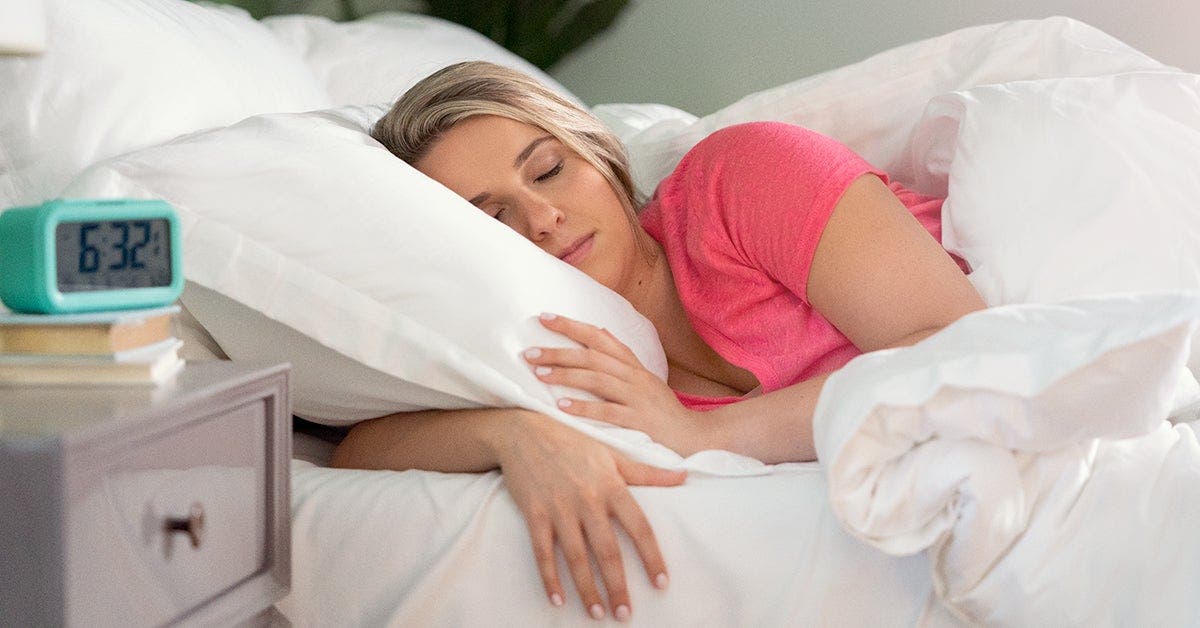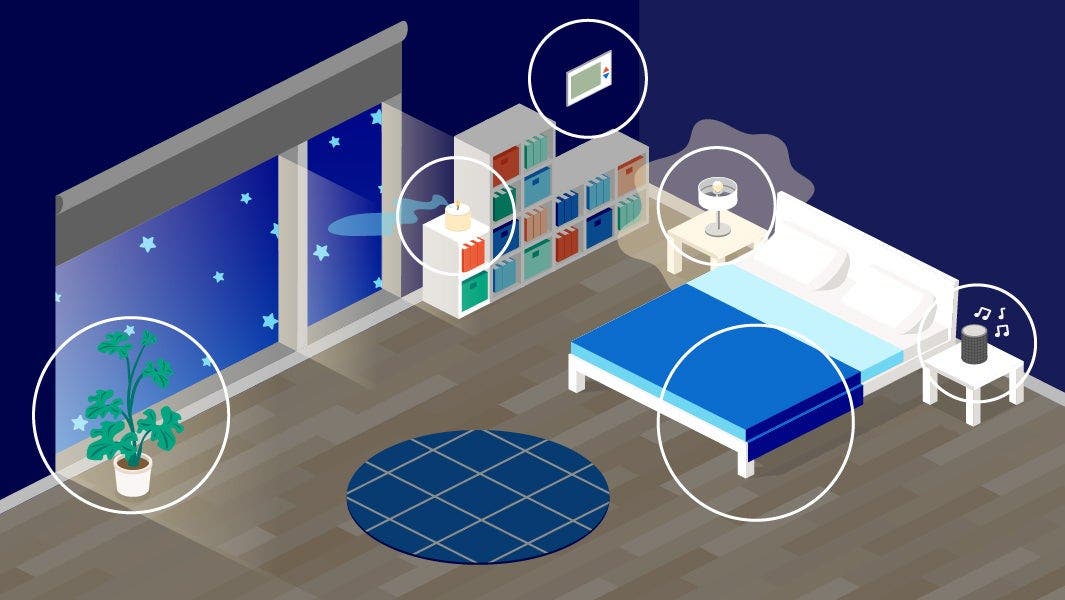A sleep-friendly bedroom for better rest


When it comes to your wellness journey, your environment is key. For example, you may have found that arranging your fridge and pantry just slightly differently can make it more likely that you’ll reach for the foods you want to eat more of. Or that setting out your workout clothes before you go to bed helps make it a little easier to get out for your morning walk.
Just like managing your environment can help set you up for healthier food and activity choices, it can also set you up for better sleep. If your bedroom is too warm, noisy—or even too messy—you may find that it’s more difficult to fall (and stay) asleep, and you may be less likely to get the recommended seven to nine hours of sleep per day. Luckily, making over your sleep environment doesn’t need to be expensive or time consuming. Read on for six steps you can take today to get better sleep tonight.

1. Shade your windows and check the lighting
Darkness triggers the release of sleep-inducing hormones, but most of us don’t give our bodies the chance to do that, says W. Chris Winter, MD, author of The Sleep Solution: Why Your Sleep is Broken and How to Fix It. “When it’s time to go to bed, it’s really important that our bedrooms be not only dark, but exceptionally dark,” he says. Winter suggests investing in blackout blinds—not shutters or flimsy blinds—that keep any light from streaming in.
Additionally, start to dim the lights a few hours before bed. Research shows that being exposed to too much home lighting before bedtime can affect circadian rhythm—your body's natural clock that helps regulate your sleep-wake cycle. Reducing exposure (such as by turning off overhead lighting and just keeping one lamp on) can lessen this effect.
2. Pick the right bedding
Making your bed is just half the battle. The sheets you sleep in might make or break your sleep, says Winter. Opt for moisture-wicking fabrics that will help you stay cool and keep your skin from feeling clammy at night. If you’re having to layer up at night or rip off your clothes in the middle of the night, try tinkering with your blankets and sheets.
“You want to create a situation where you are relatively unclothed but you’re controlling your temperature based upon sheets and blankets in your bed. If you’re cold when you go to bed, putting on sweatshirts is not a great plan for temperature control,” says Winter.
Additionally, consider your mattress and pillow. Finding the right level of support for you could help make for a more comfortable—and sound—night's sleep.
RELATED: How to sleep better when stressed
3. Have a zen nightstand
As tempting as it may be, your bedside table is not the place to keep your smartphone, says Winter. Not only can the temptation to browse and swipe stir up your mind before sleep, but smartphones and other devices emit blue light that may harm your quality of sleep. Instead, keep your nightstand clear of tech and cover the time on your alarm clock, suggests Winter.
“Knowing what time it is at night is extremely overrated,” says Winter. “It could create anxiety for some people if they have to get up at 6:30 and they wake up and see it’s 5:30 and think, ‘Oh my gosh, I only have an hour to go back to sleep.’”
In place of devices, Winter suggests using the space for some sort of sturdy knickknack that won’t break when you toss it on the ground. If you’re lying in bed being kept awake by something you need to remember in the morning, you can think of that task while you knock the item off the nightstand. You’ll be able to fall asleep knowing that when you see the item on the floor in the morning you’ll remember what you need to take care of. (Winter keeps a wooden rhinoceros on his bedside table for this very reason.)
RELATED: Can melatonin really help with sleep?
4. Pay attention to sound
A noisy bedroom is—not surprisingly—hardly conducive for good sleep, but one that's too quiet may also not work for you. Some people need silence to nod off, while others prefer soothing background noise (for example, the whir of a fan or a sleep sound machine). You may also benefit from background noise—and ear plugs!—if outside sounds (a yapping dog or neighbor’s music) keeps you up.
5. Check the temperature
A bedroom that’s too warm or excessively cool can get in the way of sleep. For many people, the ideal sleep temperature is between 60 and 67 degrees Fahrenheit. Play with the thermostat (or bring a fan into your bedroom) to find out what works well for you.
6. Keep it tidy
Your bedroom should feel like a sanctuary for sleep, and that’s hard to accomplish if your laundry is thrown on the floor and your bed is a mess, says Winter. Aim to keep your room tidy, orderly, and smelling clean—and yes, that means making the bed. A survey by the National Sleep Foundation found that people who said they made their bed every day were 19 percent more likely to sleep well at night than those who just tossed the sheets off and started the day. Turns out, mom knew best!
RELATED: How much sleep you actually need
